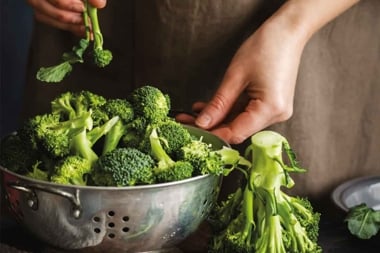Calendula and Arnica
Both calendula and arnica are extremely valuable in natural medicine and should be included in every home medicine chest-not necessarily the dried herbs or flowers, but the tinctures, salves and creams made from them.

Both calendula and arnica are extremely valuable in natural medicine and should be included in every home medicine chest not necessarily the dried herbs or flowers, but the tinctures, salves and creams made from them. They are most useful in first aid and are indicated for treating bruises wounds after accidents.
The bright golden-yellow blossoms of calendula and arnica almost look alike, at least to the untrained eye. Herbalists, however, know the distinct difference of these two healing plants, which don't even belong to the same family.
Calendula
Better known to everyone as marigold, Calendula officinales blooms profusely in temperate climates just about everywhere along waysides, dumping places, vineyards and cultivated gardens. Calendula comes in a wide variety, ranging from the small 20-centimetre bushy marigold to the large 40-cm flowering plant. Once planted, it spreads like a weed and is hard to keep under control. Christel, my wife, knows this only too well. She loves those bright orange colours of the large variety as a decorative eye catcher for her garden entrance. As the larger plants seed themselves and reappear every year, they keep her busy removing the spreading marigold plants from the neighbouring vegetable patches.
Marigold blooms from June till October. By the way, the Latin description officinales indicates that calendula is a recognized medicinal plant and is officially entered into the Pharmacopoeia, the book of natural medicines.
A Wide Range Of Applications
The main medicinal ingredient of calendula is a specific saponoside responsible for the anti-inflammatory characteristics of this herb. The calendula saponosides develop their healing activity especially in the preparation of an ointment rather than in a tincture. The other medicinally active ingredients are a complex of carotene, polysaccharides, etheric oils and essential fatty acids. All these components make calendula one of the most valuable medicinal herbs with an enormous spectrum of healing applications.
Herbal tea - The dried petals of the flower can be prepared as an herbal tea and taken internally for treating arteriosclerosis and varicose veins, thereby improving blood circulation. Since calendula tea is well tolerated, it can be safely taken as a daily beverage. Two cups a day already have a preventive effect. Drinking calendula tea can also eliminate parasites and arthritis. Prepare like ordinary tea or follow the instructions on the package.
Tincture - It's easy to make a calendula tincture at home by just adding 15 grams of fresh petals of the flowers to 100 millilitres of vodka, letting it stand for 10 days, then siphoning it off. However, it's better to purchase a quality brand tincture at your health food store that guarantees the proper potency. Calendula tincture, diluted in four parts of water, is very helpful in making a compress for open and poor healing wounds. You can treat insect stings, mycosis (nail fungus), all other skin irritations and inflammations by repeatedly dabbing a tincture-soaked cotton wad on the affected area.
Cream - Skin creams in the cosmetic market sector now contain calendula more often than ever before. But you will find special creams with a higher concentration of calendula for natural skin care in health food stores. Even baby creams and soaps include calendula. If you value beautiful skin, your top choice in terms of ingredients should be calendula cream. It's also excellent for rough hands and fingernails.
Ointment - From a healing point of view, calendula is the queen of all ointments. It is the most widely used of all calendula preparations and has the most convincing results. It is an exceedingly versatile medication and is excellent for treating wounds, skin cancer, burns and bedsores. The ointment rapidly soothes pain, is extremely easy to apply, and there are no restrictions whatsoever to its use in terms of tolerability or unwanted side-effects.
Arnica
A very rare medicinal herb, Arnica montana (as the Latin description montana indicates) grows almost exclusively in alpine regions--at least 1,500 feet above sea level on lime-free, turf-covered, acidic meadows. In Europe, Arnica montana is a protected species and is not allowed to be collected from the wild. The North American species Arnica chamissonis, which is much easier to cultivate, was tested for many years for its medicinal efficacy before it was included in the American Pharmacopoeia. The main ingredients are etheric and volatile oils, which are anti-spasmodic and muscle relaxing, as well as flavonoids and a unique and arnica-specific plant substance which acts as antibiotic, anti-inflammatory, anti-coagulate and pain reliever.
Sport injuries, bruises, strained tendons or any accidental bump to the body that result in blue marks or broken blood vessels can be successfully treated with arnica tincture, as long as it is not an open wound.
Arnica tincture penetrates the skin, eases the pain, prevents inflammation, relaxes muscle tension and speeds the healing process. The best way to apply arnica tincture is by making a compress of gauze and/or cotton wad soaked in the tincture. Secure the compress in place with a cloth bandage for several hours and repeat three or four times a day.
Arnica tincture is a must for your first aid kit, especially if you are an active sports enthusiast or athlete. Accidents do happen and you need to be prepared. My recommendation is to pick up a good brand from your health food store.
Note: Arnica can have a toxic effect and therefore must not be taken internally unless in homeopathic form. In homeopathy, arnica is indicated for angina pectoris and other degenerative heart diseases.
Healing Applications for Calendula
Herbal Tea:
- Arteriosclerosis
- Elevated blood lipids - high cholesterol
- Heart problems
- Lymphatic ganglion enlargement and inflammation
- Varicose veins
Tincture:
- Insect bites
- Mycosis, nail fungus
Cream:
- Acne
- Eczema
Ointment:
- Bed sores
- Boils
- Burns
- Frostbite
- Open wounds
- Slow healing wounds
- Skin abrasions
- Skin cancer - melanoma
- Skin and nail fungus
Healing Applications for Arnica
Cream, tincture or oil (for external use):
- Bruises
- Joint Inflammation
- Muscle strain
- Soreness
Homeopathic Arnica
- for internal use.
- Use immediately following an injury.
- Helps heal bruising and soreness. Use when symptoms worsen with use of injured part, with the slightest touch, from motion or in the cold and damp.
- Head injuries that cause dullness or shock.
- Muscle aches and strains from overexertion.
- Angina pectoris and degenerative heart disease.
- Jet lag, sleeplessness and overtiredness.
Source: Encyclopedia of Natural Healing (alive Books, 2002).




